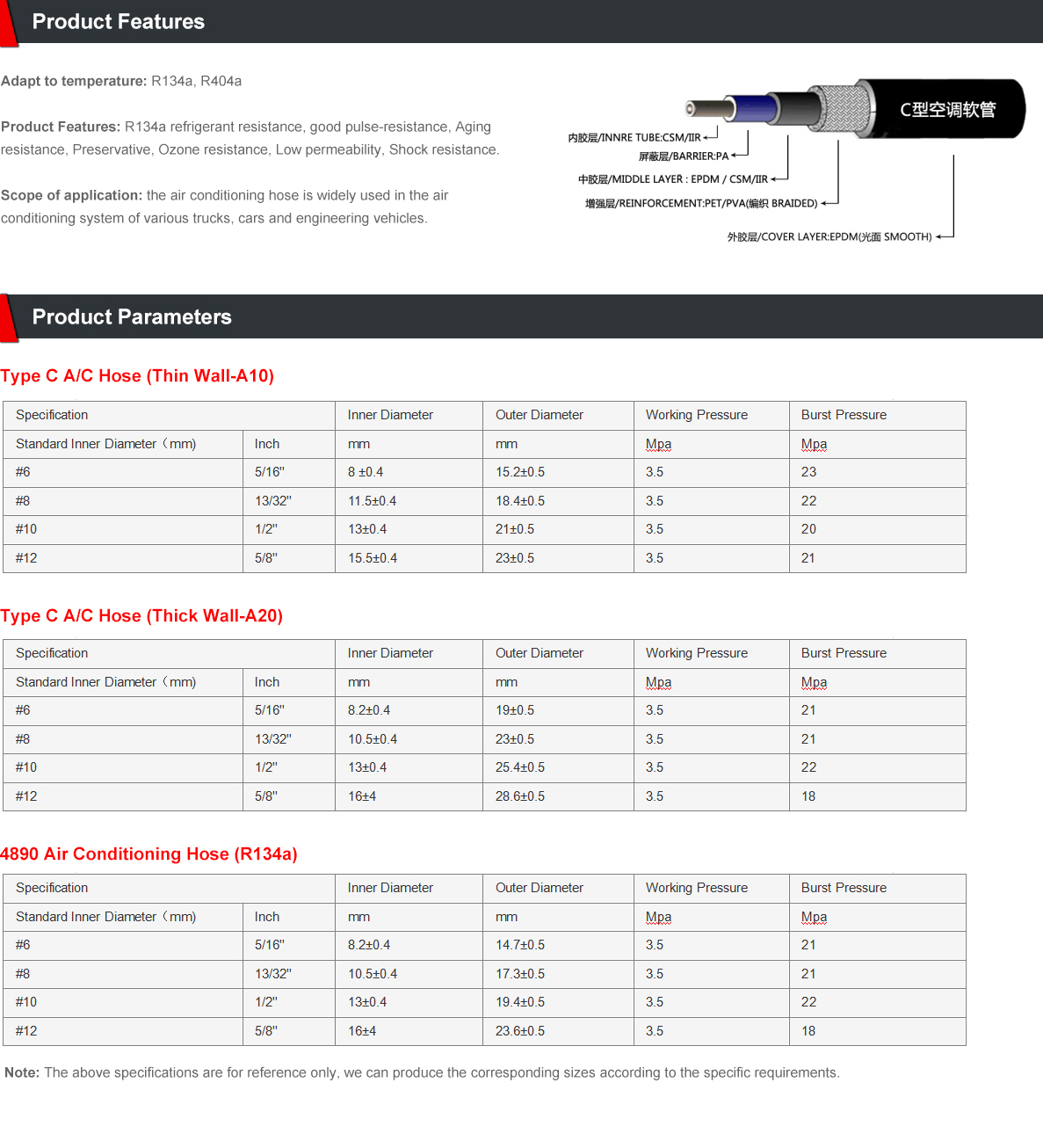high side power steering hose
Understanding High Side Power Steering Hoses Essential Insights
Power steering systems have become a standard feature in modern vehicles, significantly enhancing maneuverability and driver comfort. Among the various components that contribute to this system's efficiency, high side power steering hoses play a crucial role. In this article, we delve into the function, construction, maintenance, and common issues related to high side power steering hoses, providing essential insights for car enthusiasts and everyday drivers alike.
What is a High Side Power Steering Hose?
The high side power steering hose is a critical component in a vehicle's hydraulic power steering system. It is responsible for transporting pressurized fluid from the power steering pump to the steering gear or rack. This high-pressure fluid is necessary for assisting in steering, allowing for smoother and easier maneuvering of the vehicle. The efficient flow of hydraulic fluid reduces the effort needed to turn the steering wheel, making driving a more enjoyable experience.
Construction and Materials
High side power steering hoses are engineered to withstand extreme pressure conditions associated with hydraulic systems. Typically made from reinforced rubber or synthetic materials, these hoses are designed to resist high temperatures, abrasions, and corrosion. The inner lining of the hose must be smooth to facilitate optimal fluid flow while the outer layer is constructed to provide durability against environmental factors such as heat and friction.
Moreover, the connectors at either end of the hose are usually made of metal, often aluminum or steel, to ensure a secure connection to the pump and steering rack. Properly fitted hoses are essential to prevent leaks that can compromise the functionality of the power steering system.
Maintenance of High Side Power Steering Hoses
high side power steering hose

Regular maintenance of the power steering system, including the high side hose, is vital for ensuring longevity and optimal performance. It is generally advisable for vehicle owners to
1. Inspect Hoses Regularly Look for signs of wear, such as cracks, bulges, or leaks. Given their exposure to high pressure and varying temperatures, hoses can deteriorate over time. 2. Check Fluid Levels Low power steering fluid levels can indicate a leak in the high side hose. Maintaining the appropriate fluid level helps in maintaining pressure and assists in smooth steering operation.
3. Replace as Necessary If a hose is showing significant signs of wear or has developed a leak, it should be replaced as soon as possible. Continuing to drive with a compromised hose can lead to further damage to the power steering pump or steering rack.
Common Issues with High Side Power Steering Hoses
Leaking or damaged high side power steering hoses are common issues that can affect vehicle performance. A leak in this hose can lead to a drop in fluid pressure, causing the power steering system to fail, resulting in an increased effort required to turn the steering wheel. This condition not only makes driving more difficult but can also lead to safety hazards.
Additionally, if the hose becomes blocked or restricted, it can impede the flow of fluid, leading to steering stiffness. This blockage can stem from debris or damage within the hose or the connections. Regular inspections and maintenance can help identify these issues before they escalate into major problems.
Conclusion
High side power steering hoses play an indispensable role in the overall functionality of a vehicle's power steering system. Understanding their purpose, how to maintain them, and recognizing common issues can empower car owners to care for their vehicles effectively. Regular maintenance is essential to ensure that the power steering system operates smoothly, preserving the driving experience and enhancing safety on the road. By staying vigilant about the condition of high side power steering hoses, drivers can avoid costly repairs and enjoy a safe, comfortable ride.
-
Quick Release Ball Joint – Tool-Free, Durable, Leak-TightNewsNov.13,2025
-
Spiral Guard Hose Protection — Durable, UV-Resistant WrapNewsNov.13,2025
-
SAE J1401 Brake Hose Specifications: Durable, Low ExpansionNewsNov.13,2025
-
SAE J1401 Brake Hose Specifications | DOT-Approved, DurableNewsNov.13,2025
-
Spiral Guard Hose Protection - Abrasion-Resistant, UV-StableNewsNov.10,2025
-
SAE J1401 Brake Hose Specifications | DOT-Certified, DurableNewsNov.10,2025

